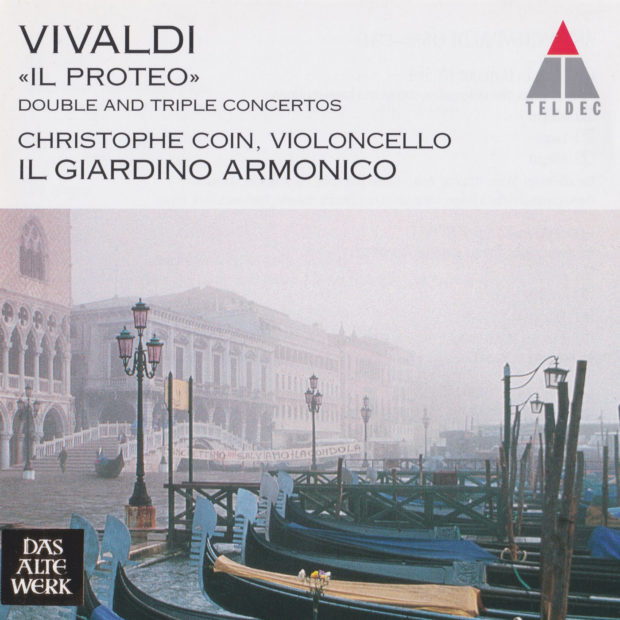Historically speaking, the Baroque concerto doppio – the double concerto or concerto for two solo instruments — is coeval with the single concerto. By the 19th century, however, the double concerto — unlike its solo counterpart — had long since fallen from favour, with the result that when a composer such as Brahms ventured into this field with his famous Double Concerto for violin and cello op. 102, critical voices were quickly raised. The much-feared doyen of Viennese critics, Eduard Hanslick, provided perhaps the most pertinent expression of the aesthetic reservations of his time: “The genre is problematical by its very nature. A double concerto is like a drama that has two heroes instead of one; by laying common claim to our sympathy and admiration, they simply get in each other’s way. But if there is a single musical form that one can legitimately claim rests on the superior might of a single victorious hero, it is the concerto. Do we not have something similar in painting? Artists avoid double portraits and prefer not to immortalize man and wife on a single canvas.” This clear aesthetic preference for the solo concerto dates from an age of middle-class concert halls in which audiences admired and fêted itinerant instrumental virtuosos, who were themselves more interested in solo concertos — for where is the leading violinist or cellist willing to share the public’s adulation with a colleague, be he ever so illustrious? Things were different in Vivaldi’s day. On hearing the Concerto for violin, cello, strings and continuo RV 544, no contemporary theorist would have voiced the same fundamental objections as those expressed some 150 years later by Hanslick in the context of Brahms’s Double Concerto. During the Baroque Age, concertos for two or more solo instruments (quite apart from those works that derived from the tradition of the concerto grosso) offered composers an interesting choice of combinations and made an entertaining change for audiences. Vivaldi’s manifest and manifold interest in the concerto as a genre is also bound up, of course, with his position at the Pio Ospedale della Pietà in Venice, an orphanage for girls that had originally been run along strictly monastic lines (the girls were intended to take the veil) but which by Vivaldi’s day had acquired an outstanding musical reputation for itself. Under the Pietà’s maestro de’ concerti, the orchestra had developed into one of the finest ensembles of its day, eliciting the astonishment of the French scholar Charles de Brosses, who wrote admiringly following his visit to the city: “They play the violin, recorder, organ, oboe, cello, bassoon; in short, there is no instrument large enough to frighten them.”
Not even the cello left the young ladies in awe, although “solo work on this instrument is by no means a simple matter”, to quote the German writer on music, Johann Joachim Quantz: “Players wishing to distinguish themselves on the violoncello”, Quantz wrote in 1752, “must be equipped by Nature with long fingers and have strong tendons in order to be able to stretch their fingers wide apart. But if these necessary qualities are found in combination with good teaching methods, very many beautiful sounds can be produced on this instrument.” The “necessary qualities” must have been present in abundance at the Ospedale in Venice, as must “good teaching methods”, since Vivaldi’s cello concertos place considerable technical demands on their performers: on the one hand, they required an advanced bowing technique that facilitated every kind of articulation from virtuoso staccato writing to smooth legato playing over several strings and, on the other, a secure left-hand technique that guaranteed purity of intonation in every register up to c” and beyond. In a word, Vivaldi’s cello concertos are inconceivable without the development of a specific cello technique borrowed, in part, from the violinists, whom the cellists regarded, not without good reason, as their rivals: the instrument was held without the aid of the left hand, which was now free to execute smooth and virtuosic changes of position; and the underhand grip was replaced by the overhand grip, enabling the performer to use the whole length of the bow and develop a cantabile style of playing.
Vivaldi wrote an astonishingly large number of concertos for the cello: 27 solo concertos, one for two cellos (RV 531) and a whole series of works in which the cello is combined with other instruments, notably the violin. Among the last-named category are the two works recorded here, the Concerto for two violins and two cellos RV 564 and the Concerto for violin and two cellos RV 561. These concertos presented Vivaldi with a particular challenge as a composer: how could the musical material be suitably divided between (or among) the different soloists? The early G minor Concerto for two cellos (it was written between 1713 and 1717) already indicates the most varied possibilities within its narrow confines: on the one hand, the two cellos engage in dialogue with one another, with each of them stating more or less the same material in turn, with only minimal overlapping. Occasionally — as in the slow middle movement — the two instruments combine to produce the beguiling and attractive sound of parallel thirds or sixths. But the most common form of combination is that of accompaniment, in other words, the dominant solo voice is accompanied by the second cello with typical accompanying figures such as broken chords and scales. By comparing the different concertos included in the present recording, listeners will gain an insight not only into Vivaldi’s virtuoso handling of concerto form but also into the immense variety with which he was able to invest individual instruments (in this case, the cello) by combining them in the most disparate ways. Professionals and amateurs alike must have been equally delighted by the results.
Wolfgang Sandberger

